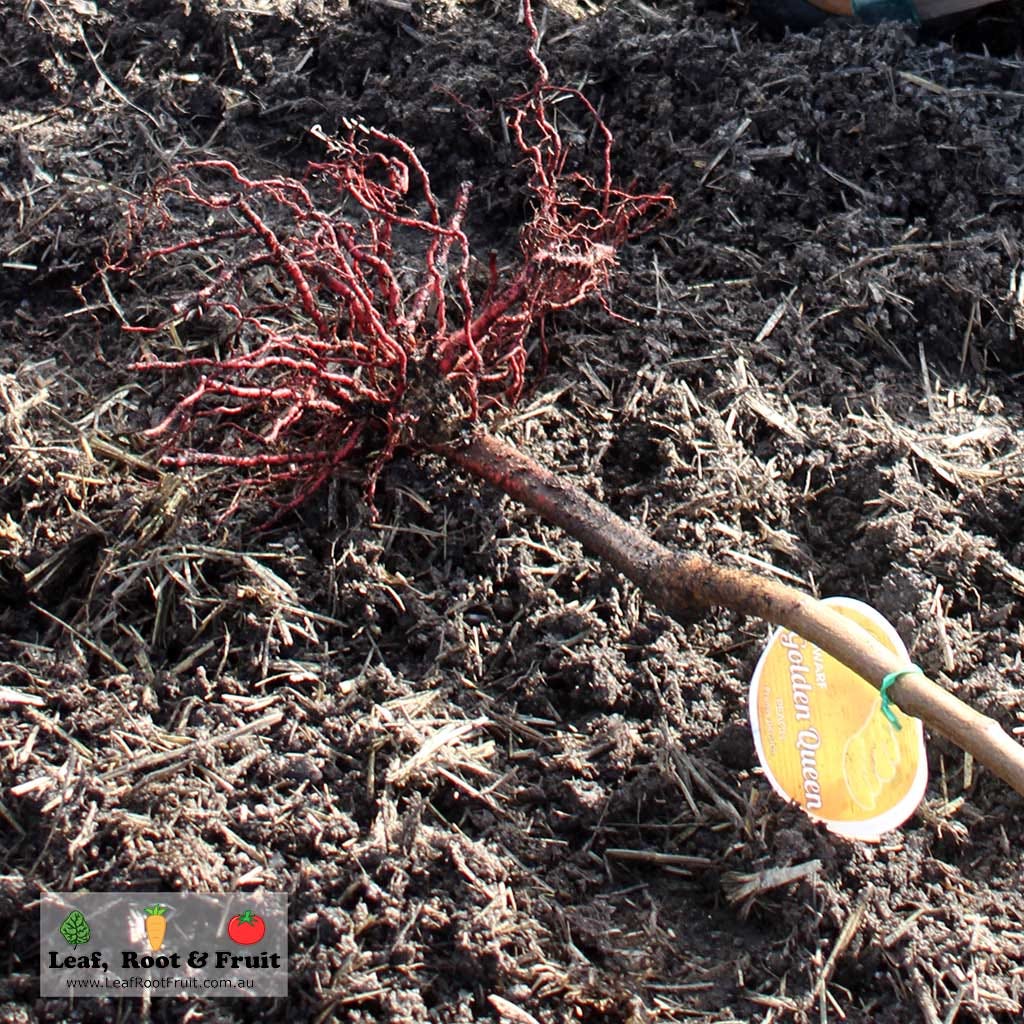Buying Fruit Trees: The Importance of Choosing the Right Rootstock
Includes a list of different rootstocks for you to consider for your backyard orchard
Most fruit trees available for purchase in nurseries, large hardware chains and online stores are grafted. This means that the desired tree has been added onto a rootstock, that can alter the growth habits of the tree.
For example, a small branch called a scion can be taken from a Granny Smith apple tree and can be grafted onto the roots of a different apple variety to dwarf the size of the Granny Smith tree to under 2 metres. Without being grafted onto dwarfing rootstocks, a Granny Smith apple tree grown from seed will grow to over 9 metres tall.
What is a rootstock?
A “rootstock” is the root system of a grafted tree. Rootstock trees are grown for one year, before a piece of scion (a small branch from the tree with the desired fruit qualities) is grafted onto the trunk of the rootstock. Once established, any remaining branches and foliage from the rootstock are removed so that only leaves from the scion are allowed to grow.
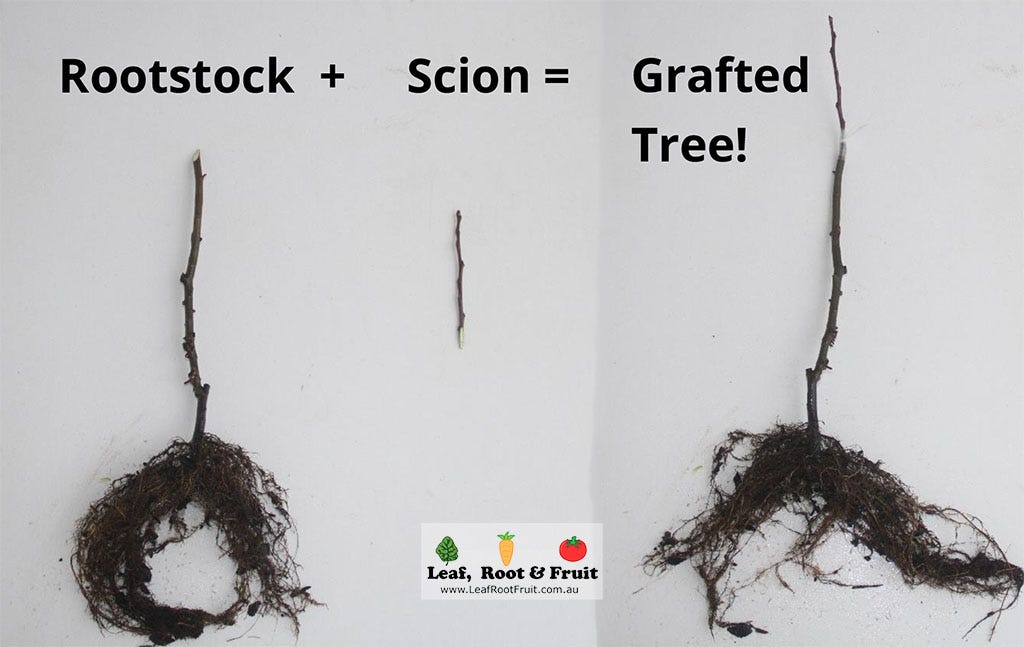
Often, if rootstocks grow into full sized trees without a scion grafted on top, they will bear poor quality fruit (if they fruit at all). However, the tree will probably be very hardy, and have good disease resistance.
We can use different rootstocks to control the following attributes of fruit trees:
Tree size (or vigour).
Time to fruiting (from the standard 5+ years, to as little as 2 years post grafting).
The ability of the plant to survive in certain soil types or climatic conditions.
The ability to tolerate wet (or very dry) soils.
Disease resistance.
Stability of the plant and ability to withstand strong winds.
Hardiness of the plant.
Usually, the qualities of the fruit, such as taste, texture, colour and timing of ripening are determined by the scion.
By grafting fruit trees, with the right combinations of rootstocks and scions, you can have hardy, disease resistant trees that produce large quantities of tasty, quality fruit. Fruit Tree Pruning requirements will be minimal ensuring that your orchard thrives with little effort.
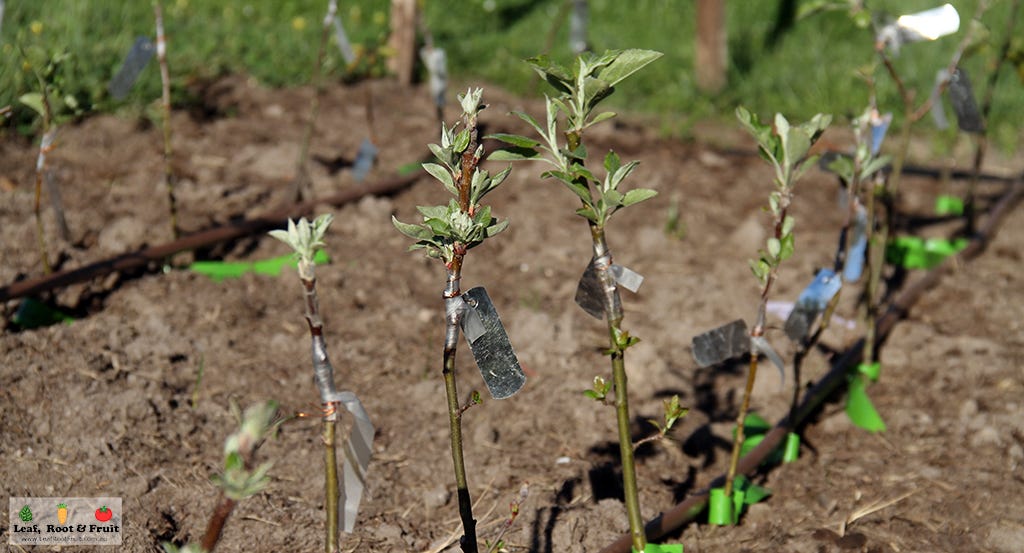
Don’t pick a fruit tree to plant into your garden based only on the type of fruit it will bear. Make sure you pay attention to the rootstock, as this controls many of the attributes of the fruit tree.
Dwarf fruit tree rootstocks
Some dwarf fruit trees will thrive, while others won’t produce fruit if you restrict them to pots. It’s important to make sure you have the correct dwarfing rootstocks for your growing situation.
The development of dwarfing rootstocks for many different fruit trees, means that we can now grow very productive trees in much smaller spaces. There are a large range of different dwarf rootstocks and they all restrict tree height to various degrees.
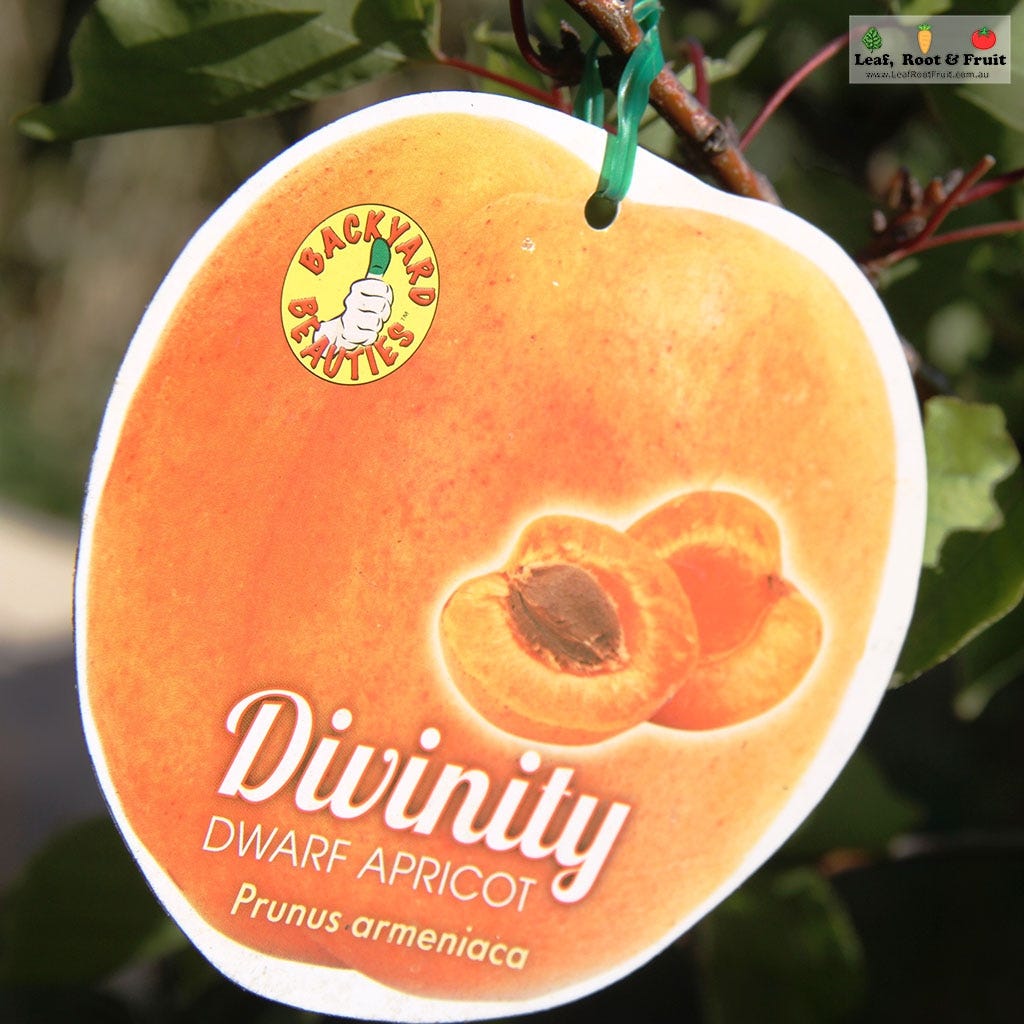
Fruit trees grafted onto dwarf rootstocks have many advantages over standard sized trees:
They keep the fruit trees very small, so they can be grown in small spaces, espaliered along driveways, on balconies and grown in large containers.
They hardly (if ever) require pruning because they don’t keep trying to grow into a 10 metre tall fruit tree.
They often fruit within 2 years instead of the usual 7 to 10 years.
You don’t need a ladder to pick the fruit.
Netting to protect the fruit from possums and birds is much easier and more cost effective.
Not all dwarfing rootstocks are equal!
Some dwarfing rootstocks will restrict fruit tree growth to 1.5 metres, while other dwarf fruit trees may get as tall as five metres. It’s going to be difficult to pick the fruit from the top of your “dwarf” fruit tree if it’s five metres tall!
It is important to know exactly which dwarfing rootstock you are getting, so that you know how big the fruit tree will become. Often, this information is difficult to obtain from even your local nurseries. As a rule, I advise against buying fruit trees from the large hardware chains. They’re usually on rootstocks that are less than ideal and will mean that you’ll become a slave to their rampant growth habits.
Instead, I encourage that you buy your fruit trees from other suppliers that will provide you with the details about the different rootstocks their trees are grafted onto.
If you’re looking for grafted fruit trees to plant in Melbourne, some of the better suppliers are:
Twin Hives Nursery (Monbulk, Vic)
Ceres Nursery (Brunswick)
Daleys Fruit Tree Nursery (Online, NSW)
Yalca Fruit Trees (Online, Nathalia, Vic)
Woodbridge Fruit Trees (Online, Tasmania)
Rootstock compatibility (and incompatibility)
There isn’t one rootstock to suit all varieties of fruit trees. The following image shows the different types of fruit trees that are usually compatible with each other. For example, all citrus types can usually be grafted onto the same type of rootstock (and each other).
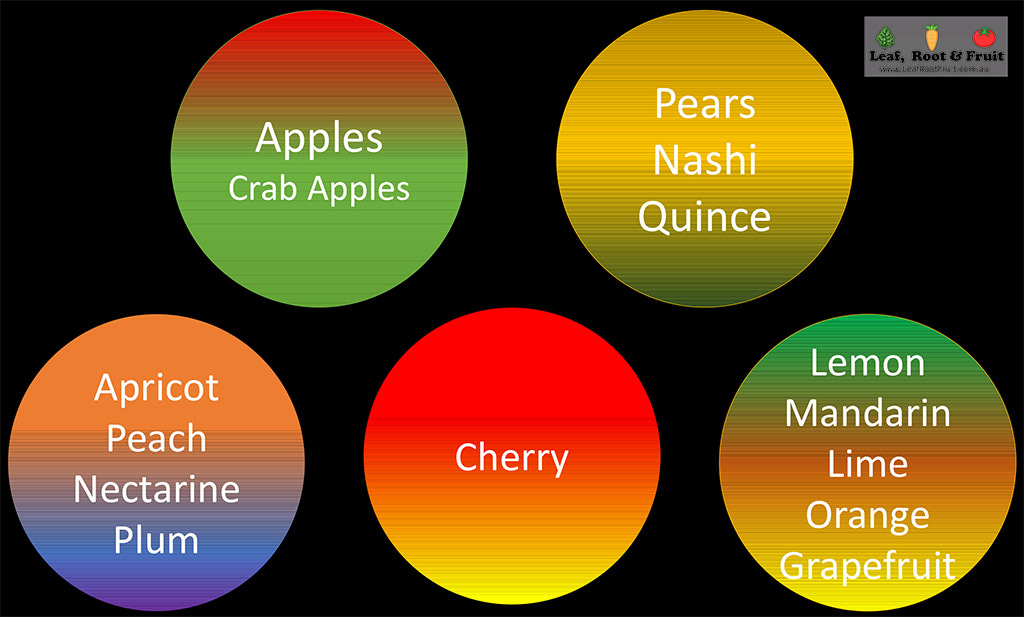
You can create ‘fruit salad trees’ by grafting different types of stone fruit onto the same tree. You could have a tree with four main branches, an apricot, a peach, a nectarine and a plum… all on the same tree!
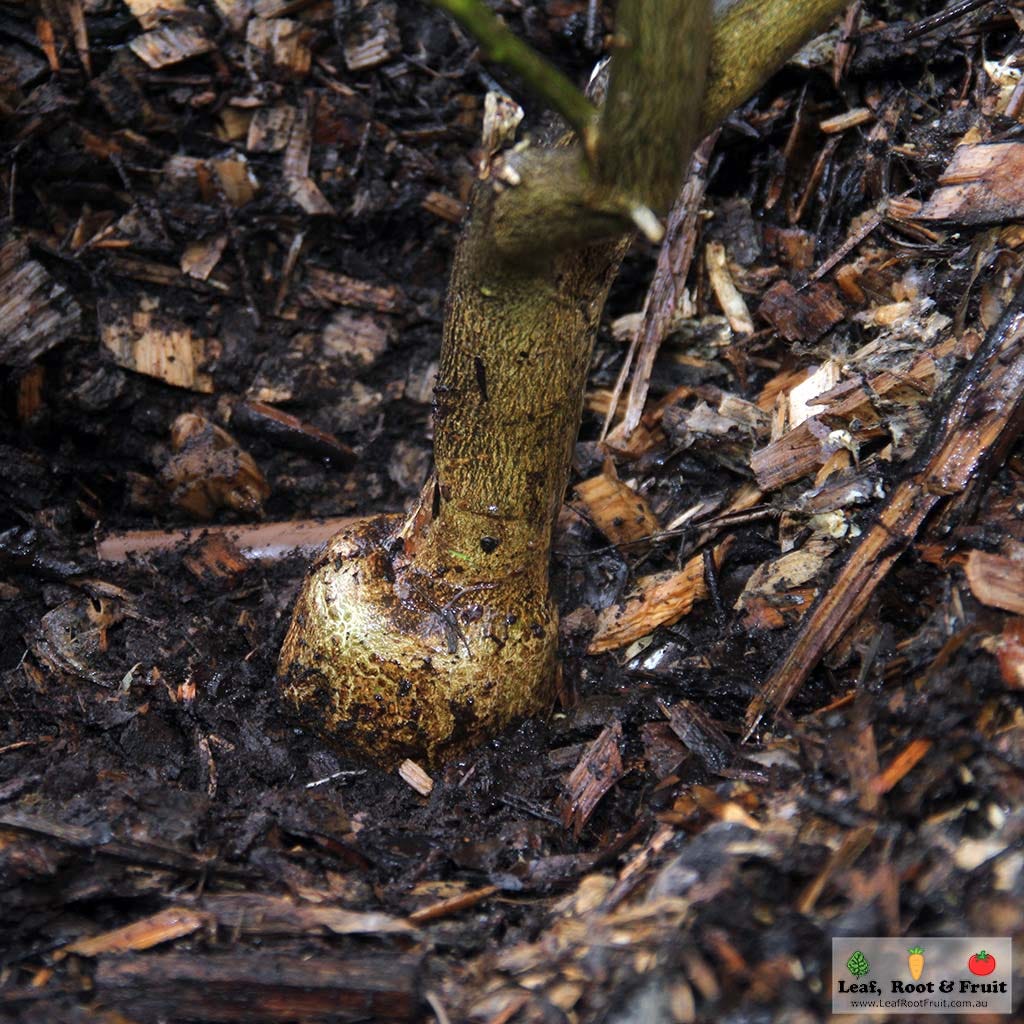
Some rootstocks also suffer from incompatibilities. For example, Imperial Mandarin has an incompatibility with trifoliata rootstock. This causes abnormal growth at the graft union. The tree will likely die from this incompatibility at around just fifteen years post grafting. Check out my list of specific rootstocks below for more examples of incompatibility and avoid buying a tree with a limited life-span.
Overcoming graft incompatibility with an interstem
Graft incompatibility can sometimes be overcome through the use of an interstem (also known as interstock) graft. For example, Quince A rootstock is a common rootstock for some pears. However, most varieties of pear are not compatible with the Quince A rootstock. A section of compatible pear scion around 10 to 20 cm long first needs to be grafted onto the Quince A and then the desired pear variety can be grafted on top of this.
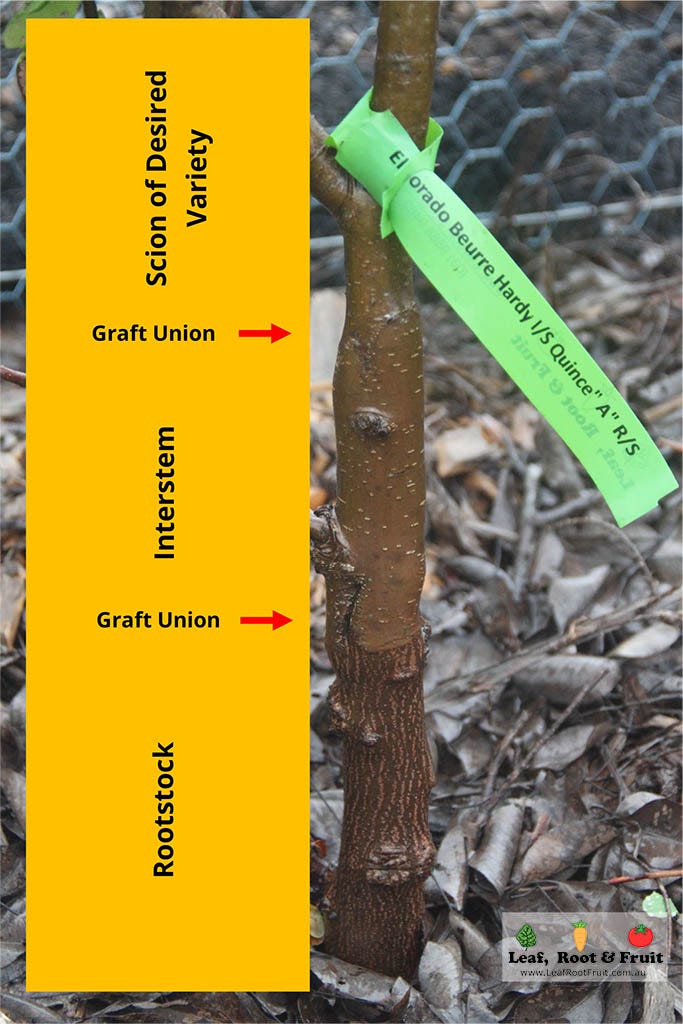
Which rootstock do I need for my situation?
The choice of rootstock really depends on your location, microclimate, soil type, what you are trying to grow, what size and shaped tree you want to grow. Are you espaliering the tree? Do you want a “step over?”
Is your area prone to high humidity at certain times of the year? Do you have good or poor drainage?
It is also worth mentioning that even though rootstocks have a big influence on the size of the tree, climatic conditions can also play a large role. Factors such as soil type, fertilising regimes, irrigation, local climate conditions and even the vigour of the scion wood can all influence the size of the tree when it is mature.


